Francia. Los expertos confirman el interés de las pinturas de Vilhonneur
Foto 1: Image released by the French Ministry of Cultural Affairs shows a drawing of a human face, experts announced Friday June 2 2006 after months of study of an ancient cave discovered in December in western France A single painted face found in the cave could be among the oldest graphic representations of a human face, said Jean-Yves Baratin, archaeology curator for the Poitou-Charentes region. Cavers exploring part of a grotto once used to dispose of animal carcasses discovered the exceptional cave, which dates to the upper Paleolithic period around 25,000 years ago. (AP Photo)
Expertos franceses subrayaron hoy el interés de las pinturas prehistóricas descubiertas en una cueva de Vilhonneur (oeste de Francia) por un grupo de espeleólogos en diciembre pasado.
Desde entonces, los especialistas se han dedicado a analizar las pinturas y los restos humanos encontrados en el lugar.
Durante un encuentro con la prensa, el responsable del estudio, el arqueólogo Jean-Francois Baratin, confirmó el 'alto interés' de las pinturas y los restos humanos, que se remontan al Paleolítico Superior, con datación en torno a 29.000 años.
La coexistencia de ambos hallazgos 'es, sin duda alguna, el principal interés del sitio', dijo Baratin, quien apuntó que el otro caso conocido es la cueva de Cussac (centro de Francia).
Las manos pintadas en cuevas, un elemento extendido en muchos yacimientos prehistóricos, son consideradas en general por los expertos como elementos religiosos o mágicos.
La cueva está en una zona especialmente rica en grutas y en vestigios prehistóricos, sobre todo de la época Neanderthal.
En las paredes se ha encontrado una silueta de una mano humana, así como algunos trazos en negro que aprovechan la irregularidad del muro para formar una cara.
Según el arqueólogo Jean Airvaux, ese rostro es único porque no se conoce nada comparable en esa época.
En cuanto a los huesos, corresponden a un adulto joven, según los análisis llevados a cabo por la técnica del carbono 14 en un laboratorio de Miami (EEUU).
Todos estos elementos estaban en dos salas, de unos nueve metros cuadrados cada una, y en ellas se encontraron, asimismo, los restos de varias hienas.
La importancia de la cueva de Vilhonneur se pone en relación con la de Cussac, donde en 2001 se encontraron restos de huesos de varios individuos que el carbono 14 apuntó que se remontaban a unos 25.000 años atrás.
Sin embargo, en Cussac no se encontraron pinturas rupestres, sino grabados, que a partir de criterios estilísticos, los científicos situaron en el periodo Gravetiense, menos elaborado que el Magdaleniense al que pertenecen las pinturas rupestres de las cuevas de Altamira (España) y Lascaux (Francia), pintadas hace unos 14.000 años.
Fuente: Terra Actualidad EFE, 2 de junio de 2006
Enlace: http://actualidad.terra.es/cultura/articulo/vilhonneur
_expertos_confirman_interes_pinturas_912297.htm
Foto 2: A French caver has discovered pre-historic cave art, including this hand in cobalt blue, believed to date back 27,000 years, older than the famous Lascaux paintings. Gerard Jourdy, 63, said he found human and animal remains in a cave in the Vilhonneur forest, in the Charente region of France. The discovery was made in November 2005, but kept secret while initial examinations were carried out. This, and two other images, were released to the press by local authorities on June 2, 2006. REUTERS/MANDATORY CREDIT: DRAC Poitou-Charentes/Jean Airvaux (FRANCE)
Foto 3: A French caver has discovered prehistoric cave art including this example believed to date back 27,000 years, older than the famous Lascaux paintings. Gerard Jourdy, 63, said he found human and animal remains in a cave in the Vilhonneur forest, in the Charente region of France. The discovery was made in November 2005, but kept secret while initial examinations were carried out. This, and two other images, were released to the press by local authorities on June 2, 2006. REUTERS/MANDATORY CREDIT: DRAC Poitou-Charentes/Jean Airvaux (FRANCE)
(2) Cave yields 27,000-year-old skeleton
VILHONNEUR, France -- A 27,000-year-old human skeleton laid out in a room decorated with ancient art and a crude representation of a face are among the rare finds in a cave in western France, officials said Friday.
The state took over ownership of the cave in the Vilhonneur forest on May 12, the French Culture Ministry said in a statement.
It was only the second time that a human body is known to have been placed in a decorated cave from the Upper Paleolithic Period, the ministry said.
A single face drawn in the cave could be among the world's oldest known graphic representations of a human face, said Jean-Yves Baratin, archaeology curator for the Poitou-Charentes region.
The face is "represented in the most elementary way," Baratin said.
He said two pieces of calcite that split were used to form the hair with two black horizontal strokes depicting the eyes. A vertical stroke formed the nose and another horizontal stroke the mouth.
Cavers exploring part of a grotto once used to dispose of animal carcasses discovered the cave in December. The find was announced in February but it was not until Friday that information about what it contained was disclosed.
The famed Lascaux Cave in Montignac, in the southwest Dordogne region, has long been considered one of the finest examples of cave paintings. However, that art dates to 13,000 years, making the Vilhonneur art much older. Another cave, Chauvet, discovered in the mid-1990s in southeast France, features some 300 examples of Paleolithic animal art, some dating back 31,000 years.
Baratin underscored the significance of the human skeleton, a young male, placed inside a decorated room. He said two rib bones were analyzed at a Miami laboratory, dating the skeleton at 27,000 years.
The only other case of a skeleton being found in a decorated cave room was in the hamlet of Cussac, a grotto experts say was as important for engravings as paintings are for the famed Lascaux caves.
The Vilhonneur cave features a series of decorations, including a negative imprint of a right hand, surrounded in black, on a wall, made by blowing color onto the area once the hand has been placed there, experts said.
Experts plan to secure the Vilhonneur cave and carry out research likely to last several years.
Fuente: PIERRE SAUVEY Associated Press writer, June 04, 2006
Enlace: http://www.casperstartribune.net/articles/2006/
06/04/news/world/541bd1aef005fcc68725718100834a78.txt
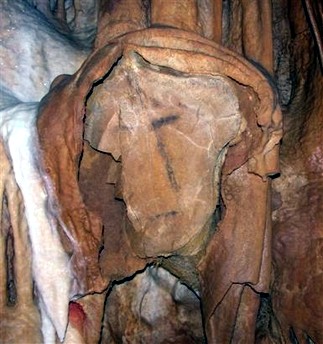
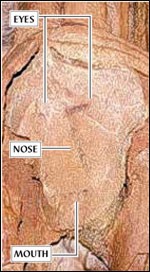
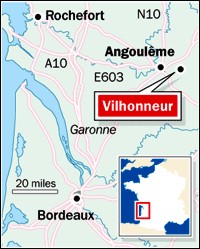
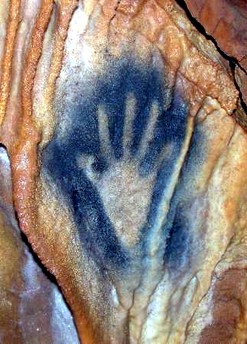
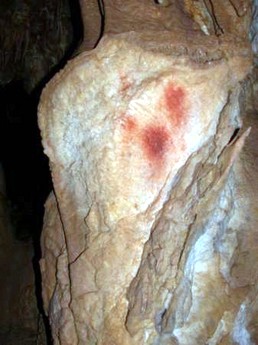
0 comentarios